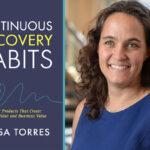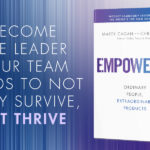
What is the Daily Stand Up?
Daily Stand Up: The Art of Standing Up and Talking
This is a daily meeting (usually in the morning), which allows the team to remain updated on progress and identify roadblocks.
The daily stand up should not take more than 15 minutes, and each person should have no more than 2 minutes to speak. Each person in the team should answer the following 3 questions, what:
- Did you work on yesterday?
- Are you going to work on today?
- Is blocking you from completing any tasks?
Ideally, the stand up should be done standing up (as the name suggests), or ideally around your Scrum/Kanban board where you can update this and ensure it’s maintained.

The Questions
What Did You Do Yesterday?
The question is obvious; it’s intended for the person to update everyone on their progress on the task they are working on. It’s a way for the Team Lead and the rest of the team to follow progress without having to chase. If the person didn’t get anything done then it obviously indicates there is a problem, or if it’s not going as fast as thought maybe an issue with the estimate and initial workload scoped.
What Are You Going To Do Today?
For this, now each team member will discuss, in front of the rest of the team on their plans for that day. This is a good way to ensure each person is responsible for what they are doing, and that they are accountable if things are not going well. If the person has nothing to do, it’s good that you had the meeting at the beginning of the day and caught this problem early. If you are using a Scrum Board there is probably a task they can take (with the next priority) or help someone else out.
What Are Your Blocking Points?
This is the final point to identify any impediments or bottlenecks. What is preventing productivity? Are there any new issues the team need to know about? These could be from hardware issues (someone in the team is having issues with their PC), or maybe someone needs to take emergency leave? There could be a dependency on another team or person? The Scrum Master is responsible for taking note on these and then removing them for the team.
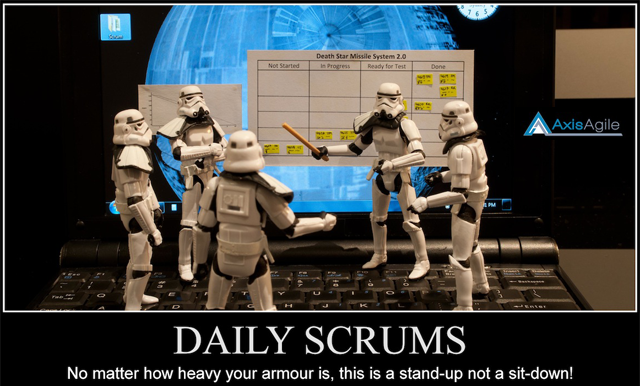
Common Problems
- Team members give their answers to the scrum master, or agile coach, or a member of the team, instead of to the team.
- Meetings take too long.
- The team starts solving a blocking issue that was raised, completely derailing the daily stand-up.
- Some members give answers that are too detailed, and they take up too much time with their answers.
- Team members fail to show up to the meeting.
- Some team members take the daily stand-up as a competition to overstate their accomplishments.
- The team answers the questions succinctly, without transferring anything meaningful to other members of the team.
- Meeting participants who are not team members take over the meeting.
- Members identify the same impediments day after day, and they are never resolved.
Tips
Starting the Meeting
Always start them on time. Nothing is worse than waiting around for someone or postponing the meeting. If the stand-up starts at 9:00am, start it at 9:00am, every day without fail — even if not everyone is there or ready. When they start to miss information or updates you will find they will start to arrive on time! It’s an important meeting, and everyone should understand its importance.
Trigger an alarm to start the meeting. I read that one team blasts out Bob Marley’s “Get Up, Stand Up”
– which acts as a warning bell that the meeting is about to start. This triggers the whole team to move to the Scrum board without any prompting. This adds a bit of fun to the meeting and ensures its informal nature.
For people who are late, you can actually have a bit of fun and penalise them or even “fine them”. Check out:
where this group forces late people to do a Michael Jackson song and dance, or
where they are forced to do the ‘Cupid Shuffle’. You can also use the technique, in which the person, who arrives last, speaks first. It’s a good way to ensure people are on time. The late person is usually the least prepared, so be careful because your meeting might not start off so well.
Speaking of the order, you can start by getting the team to pick a card; cards 1–6 for example are randomly picked which decides the order people speak. I’m a massive fan on making the order random each time. I find the best way is to use a ball or stress toy to throw around, whoever has the ball gets to speak. This is great for ensuring interruptions are minimal too. The ball should be thrown at random which helps people to remain engaged, because they don’t know if they are going to speak next. If it’s the same routine every day, the last people to speak can sometimes lose interest. This is also a great way to promotes self-organisation in the team.
Try not to attend
As a scrum master, to test the level of self-organization of your team, a good experiment to try is to do not attend or set up the meeting — see if it happens naturally with or without your presence.
Have the meeting in the same place, at the same time. This prevents any issues with scheduling or location.
Have it at the beginning of the day, I find it’s a great way to start. At the end of the day people are usually tired and just wanting to go home. But it’s important to note that the stand-up should not trigger the start of the day. The team should not stop working or wait to start because the stand-up hasn’t commenced.
You can also promote autonomy by rotating the facilitator, if you are a scrum master; don’t always facilitate the meeting — rotate! These means that if you are not available, anyone can take the lead and will also boost confidence in quieter members.
Have clear rules, maybe print them out and stick them on the wall where the meeting takes place.
Engagement
Do it standing, sitting takes out some of the energy — it’s obvious but it’s called the daily stand up for a reason.
You can add visualisation or aids, and I strongly recommend this. Do the meeting next to your Kanban/Scrum board or next to a screen if you use Jira/TFS/Trello or this kind of software. This is good as a centre piece for discussion, and is also useful for ensuring it’s always maintained.
Don’t spend too much time updating your PM tools though, listen first — it’s the most important. It’s easy if you use a physical scrum board, if it’s not so simple, update it after the meeting.
Keep the focus. Everyone in the meeting should be engaged. So no one should be at their desk (ideally), no phones, no email.
Collaboration is the key. It’s another way to promote team building and collaboration. Again, the team should be updating each other and clarifying, raising issues together.
Change up the questions once in a while:
- What you did to change the world yesterday?
- How you are going to crush it today?
- How you are going to blast through any obstacles unfortunate enough to be standing in your way?
It’s called the daily scrum for a reason. Huddle the team together. This helps with team building too; no one has to shout, and this should make people more comfortable, and promote trust.
If you are the scrum master, and the person talking is only addressing you, its good practice to break eye contact with the person, just to remind them there are other people in the meeting too!
Priorities
Focus on the baton, not the runners
One of the main priorities should be the removal of blocking issues, the whole team should be responsible for this, not just PO or SM. Identify the problem, identify who is the right person to fix it, identify its priority and act on it. It’s also a good tip to make any blockers visual, so everyone can see its status — and even help out if they see progress is slow. The Scrum Master should have an Impediment List for this.
Focus should always be on updates, keep questions to a minimum and you can use the ‘car park’ (http://www.kantanagile.com/index.php/2015/12/21/make-daily-stand-up-more-efficient-use-the-car-park/) technique from one of my previous posts to help.
Remember the team is the most important. It’s not an official project meeting, evaluation or report to one single stakeholder, the purpose of the meeting is to update the team, to add transparency to the process. For the team, by team. The meeting should be kept as casual and informal as possible, this helps people to be open and honest and not feel like they are updating their manager.
No technical discussions — It’s hard with a team of developers, but technical discussions should be stopped and taken off-line immediately. They can quickly escalate.
Discuss all the work in progress. All work Items must attend the meeting, even if not all of the team does. Think from the perspective of the work — it can’t speak for its self.
Goals
Use the acronym GIFTS for the goals of your daily stand up, standing for:
- Good Start, Improvement, Focus, Team, Status, or:
- Help start the day well
- Support improvement
- Reinforce focus on the right things
- Reinforce the sense of team
- Communicate what is going on
The meeting should be motivating and inspiring. People should leave feeling with purpose and a plan.
Attendees
It’s ok for the product owner or stakeholders to attend, but they must be observers only. It’s actually good if they are there if a team member needs a quick clarification, but again — any specific discussions should be taken offline. The whole team probably doesn’t need to go into too much detail about the clarifications you need on some of the UI — you have tomorrow’s meeting to update the team on the general progress.
If you have a big team, consider splitting the meeting into two. It’s not ideal, but neither is a daily stand up with 15 people. If you are in different locations, try to use video conference or web cams as a first option, I find being able to see everyone makes the meetings more engaging, and you can see who is interested and who is not. Voice calls over skype are not ideal, especially if everyone is at their desks because they will be tempted to work at the same time and not be fully engaged.
Meeting Length
Keep it short. It’s short for a reason. The longer the meeting the less engaged people become. Everyone should understand the importance of the meeting. If it is more than 15 minutes, then you are doing something else rather than providing a simple update on progress. Take anything else off-line. You can use the timer on your phone to ensure everyone speaks within the permitted time.
Ending
Mark the end of the meeting, maybe a phrase (“Thanks everyone, have a good day”) or a question (“Anyone have anything extra to add?”). The meeting should end on a high note and not trail off or people walking away when the meeting hasn’t finished. Imagine in American Football/Basketball where they all should ‘Go Team’ after the huddle:
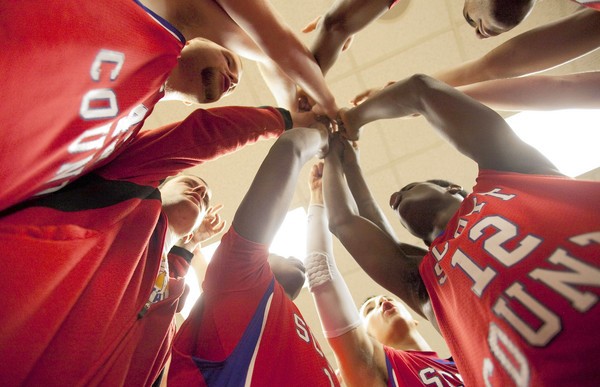
Sometimes it can be useful to send out a mini report or notes after the meeting, but I would be cautious about this as people may get too dependent on it and not focus on the meeting so much.
Review
Evaluate and review your stand-ups, maybe in the retrospective. If they do not work, discuss and improve them! The stand-up should be a meeting of importance and not just a routine.
Summary
Here is a brief summary of things to avoid during the stand-up:
- Not standing
- Not at the same place or time
- Teams joining late
- Product owners can’t join
- Reporting to the leader / Scrum Master
- Not remembering what you did (preparation)
- Storytelling
- Not discussing impediments until the last minute
- Missing important updates
- Allowing distractions (tea, phone calls, speaking to a passer-by)
- Starting a side discussion
- Problem solving
- Not listening to other team members
- Not limiting to 15 minute
Here are some examples of what a daily stand-up should look like:
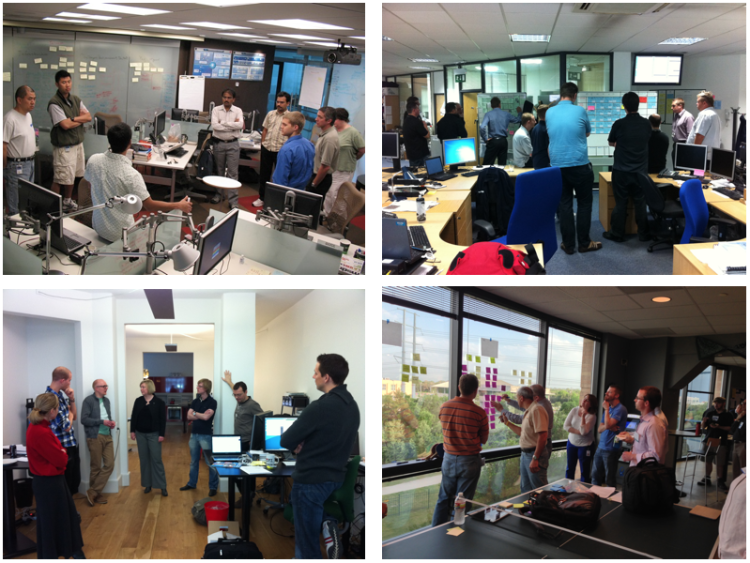
Social Media
Please check me out on social media:

